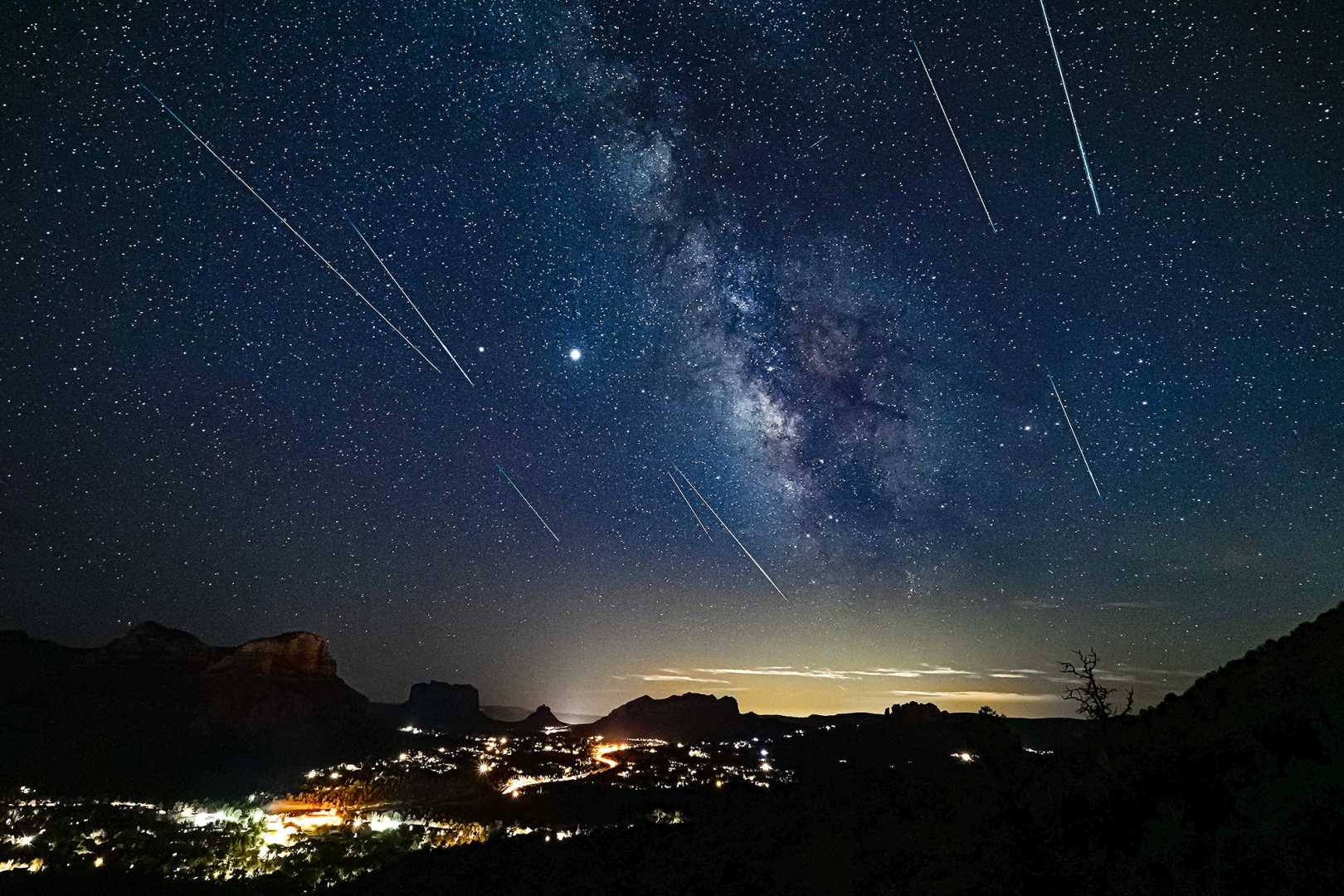News
Shooting Stars: Southern Delta Aquariids Peak This Week Amid Moonlight Challenges

FLAGSTAFF, Ariz. — Skywatchers are in for a treat this week as the Southern Delta Aquariids and Alpha Capricornids meteor showers reach their peak on the night of July 29 going into July 30. This cosmic event may offer more visible meteors than the upcoming Perseid meteor shower, which peaks on August 12.
This year, a bright moon poses a challenge for viewing the Perseids. “The glare of the moon is really a killer,” said a planetary astronomer with the Lowell Observatory. He emphasized that the moon’s brightness will diminish the visibility of meteors during that period.
In contrast, the Southern Delta Aquariids will produce up to 30 meteors per hour with the moon at just 25% full. “Finding dark skies is crucial for the best viewing experience,” said Moskovitz, who urged observers to minimize light sources, including cellphones, to help their eyes adjust to the darkness.
According to Moskovitz, early morning hours after midnight are the best times to catch the meteors. The Southern Delta Aquariids produce quick flashes, while the Alpha Capricornids may offer “slow fireballs” that can be particularly striking.
If clouds obscure the skies on July 29, Moskovitz noted that meteor showers can also be seen in the days surrounding their peak. He encouraged enthusiasts to take full advantage of the summer season, which is filled with meteor showers.
Despite the moon’s interference, some astronomers believe the Perseids will still deliver a good show this year, as they are known for producing bright meteors. Looking ahead, next year is anticipated to be excellent for viewing the Perseids due to favorable moon conditions.
“We think we have a pretty good understanding of how the activity varies from year to year,” Moskovitz explained. He forecasted a significant increase in meteor activity in 2026, which could attract many more spectators.












